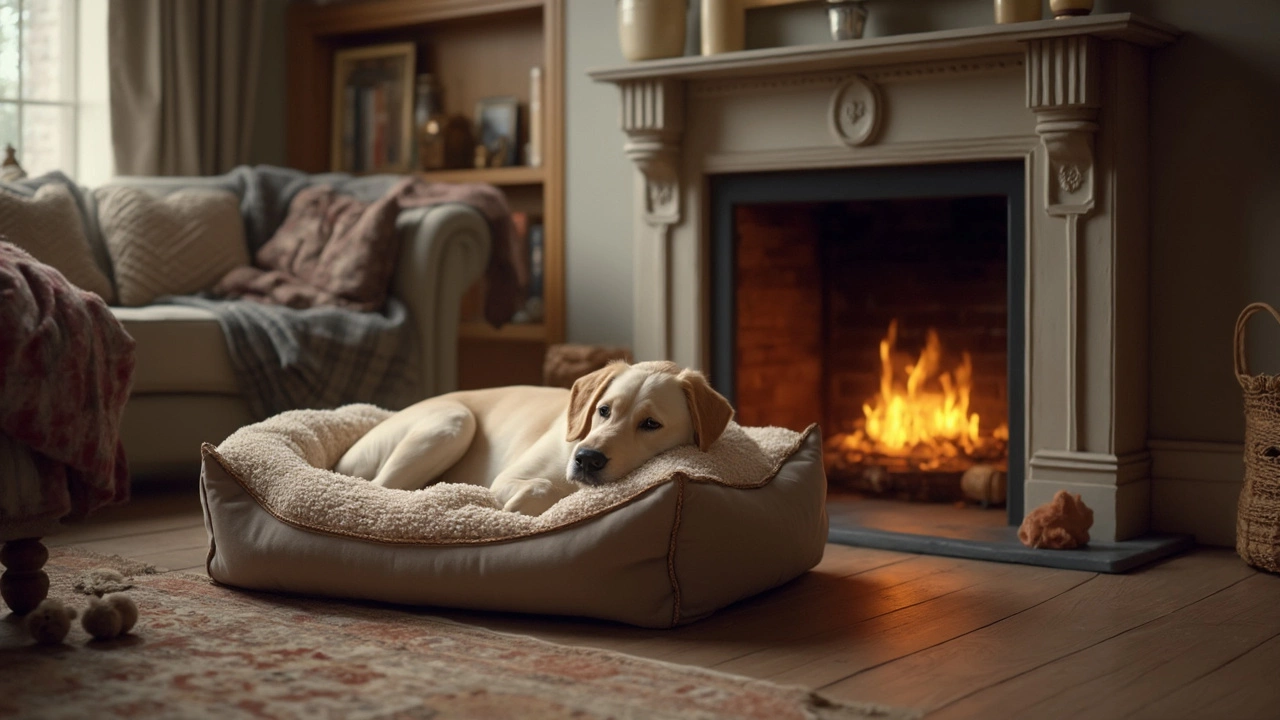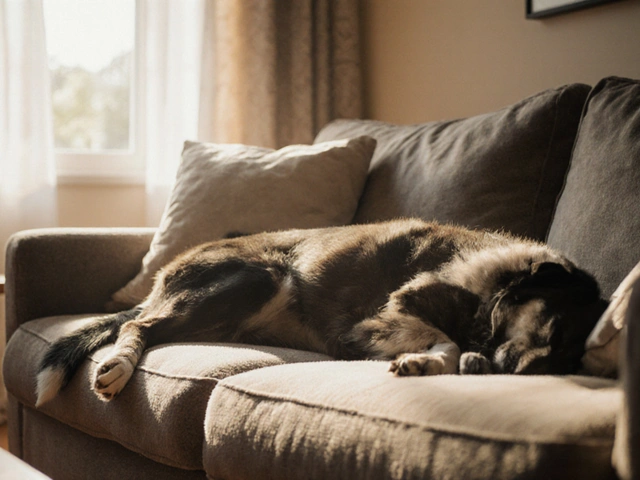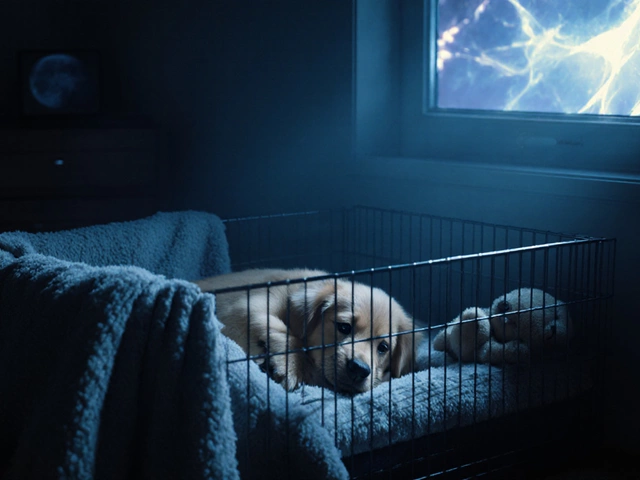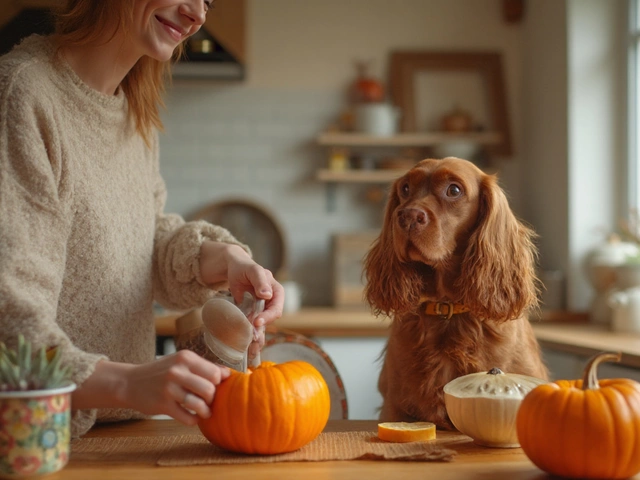Everybody thinks picking a dog bed is just about grabbing something soft and calling it a day. Honestly, your dog probably cares more about the bed than you think. Get it wrong, and they’ll just sleep on your dirty laundry instead. Get it right, and you’ll have a happier, healthier pup—not to mention fewer fur tumbleweeds where your dog actually sleeps.
The shape, size, and materials all affect whether your dog actually uses the bed or gives it that side-eye. And don’t get fooled by beds that look good for your Instagram feed but collapse after a few months. Think less about cute patterns, more about what will actually support your dog’s joints and stand up to some enthusiastic digging and shedding. If you want a bed your dog chooses over your favorite chair, you’ll need to know what to look for from the start.
- The Anatomy of a Good Dog Bed
- Choosing the Right Shape and Size
- Materials That Make a Difference
- Extra Features: What Actually Matters?
The Anatomy of a Good Dog Bed
A good dog bed isn’t just somewhere to park your pooch overnight. At its core, it needs to support your dog’s joints, insulate them from cold floors, and give them a place to call their own. When picking out a dog bed, you can’t just look at the price or how it looks—there are a few essential parts you shouldn’t skip.
- Base support: This is what will keep your dog’s hips, elbows, and back from hurting, especially if they’re older or on the heavier side. Memory foam is a popular pick for dogs with joint problems, but dense polyfiber beds work for healthy, young pups.
- Bolsters or edges: Dogs love something to lean or rest their head on. Beds with raised edges or bolsters give them a sense of security and can double as a pillow. Flat mats are okay if your dog tends to sprawl out and doesn’t curl up.
- Removable/washable cover: Dogs aren’t known for being clean. A washable cover means you don’t have to live with that wet-dog smell or fur fuzzing up your living room. Look for covers with zippers that are easy to remove and toss in the wash.
- Non-slip base: Especially if your house has wood or tile floors, you want a bed that doesn’t skid every time your dog flops down. Rubber-backed or grippy bottoms help the bed stay in place.
Let’s break down what matters for different types and ages of dogs. Take a look at this table for a quick cheat sheet:
| Dog Type | Key Bed Features |
|---|---|
| Puppies | Chew-resistant fabric, washable cover, soft filling |
| Senior Dogs | Orthopedic foam, easy step-in sides, waterproof lining |
| Large Breeds | Thick mattress, durable seams, extra-large size |
| Small Breeds | Bolsters, cozy nests, machine-washable covers |
Remember, if your bed is missing sturdy support or a washable cover, it won’t last a month. A real win is finding that sweet spot between comfort, support, easy cleaning, and staying power—your dog will actually want to use it and you’ll spend less time cleaning up after them.
Choosing the Right Shape and Size
You wouldn’t want to squeeze into a bed that’s too small, and your dog feels the same. Getting the size and shape right for your dog bed makes all the difference between "meh, maybe" and "best nap ever."
First off, size matters—no joke. To pick the right size, grab a tape measure and see how long your dog is from nose to tail while they’re stretched out. Add about 6-10 inches to that number, because dogs like a little wiggle room.
| Dog Size | Recommended Bed Size |
|---|---|
| Small (under 25 lbs) | 20" x 30" |
| Medium (25-50 lbs) | 30" x 40" |
| Large (50-75 lbs) | 35" x 45" |
| Extra-Large (75+ lbs) | 40" x 55" |
Shape isn’t just for style—dogs have sleep personalities too. Curled-up dogs usually love round or doughnut beds because the shape fits their body and helps them feel secure. Dogs who sprawl like starfish are better off with rectangular or mat-style beds, which let them stretch out without falling off the edge.
- Bolstered beds work well for pups who like resting their head on something or love to burrow.
- Flat mats are great for crate training or for dogs who run warm and like to spread out.
- Orthopedic beds can make a big difference for seniors or big breeds. They support joints and are often thicker so your dog doesn’t sink to the floor.
Keep in mind, some dogs switch positions through the night, so watch them when they nap and see how much space they actually use. Beds that are too small can actually lead to stiff joints or pressure sores over time, especially in bigger dogs. If you’re stuck between two sizes, always go bigger—it’s not like your dog will complain about some extra room.
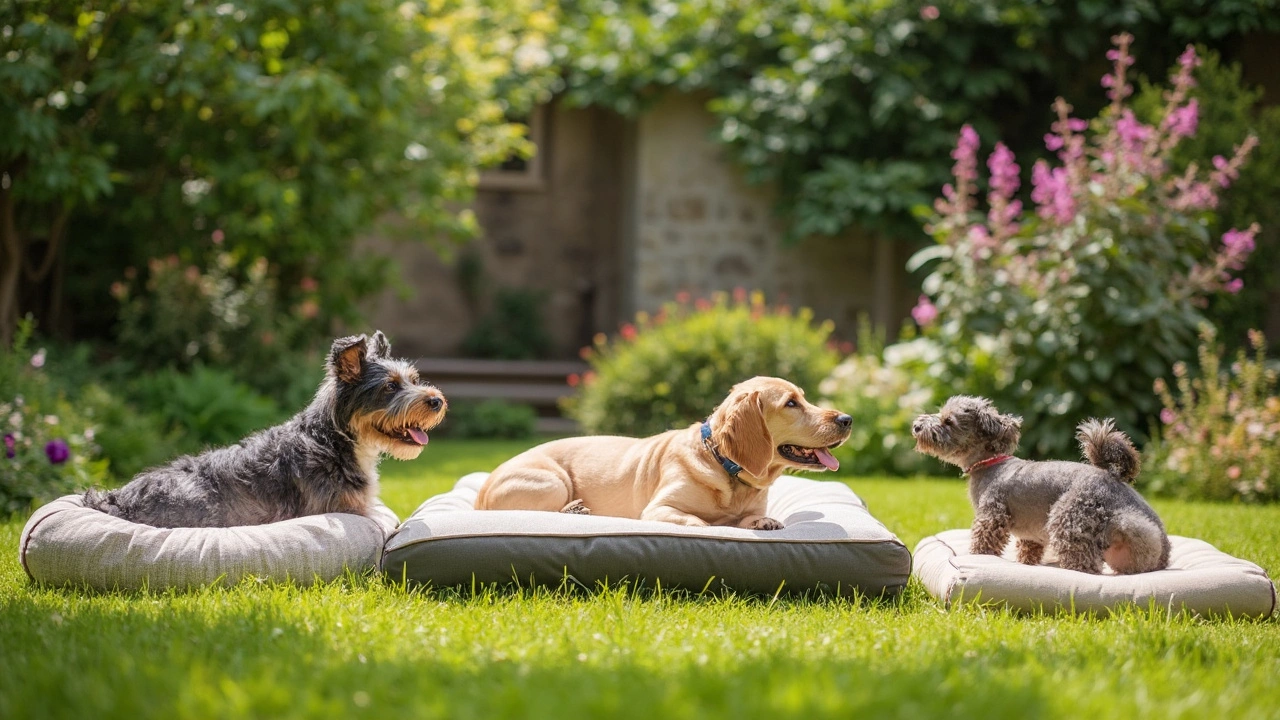
Materials That Make a Difference
The stuff a dog bed is made of can make life easier (or harder) for both you and your dog. It’s not just about what feels squishy. For real durability and comfort, you want to check what’s inside and outside the bed.
Most dog beds use some kind of foam or fiber fill. Orthopedic beds use memory foam, which is great for older or large dogs who need real joint support. Cheaper beds usually have polyfill or shredded foam. Those might look okay at first, but they flatten out fast and can lump up in weird places. If your dog is heavier, go for high-density foam that holds its shape even after months of daily use.
The outside cover gets a lot of action, too. Dogs shed, drool, and sometimes track mud or worse onto their bed. The best covers are removable and machine-washable. Look for tough fabrics like canvas or ripstop nylon if your dog likes to chew or scratch. For snuggle-prone pups, soft microfleece or sherpa works—just be sure it doesn’t trap hair or smell after a week.
Here’s how a few popular materials stack up when it comes to common dog bed needs:
| Material | Best For | Downsides | Washability |
|---|---|---|---|
| Memory Foam | Joint support, older dogs, large breeds | Can be pricey, some hold odors | Usually removable cover only |
| Polyfill | Puppies, small dogs, lightweight beds | Flattens quickly, not supportive | Good if fully washable |
| Canvas/Ripstop Nylon | Chewers, diggers, messy dogs | Can be stiff at first | Machine washable cover |
| Microfleece/Sherpa | Cuddly sleepers, cold climates | Collects hair, can pill | Easy to wash, but needs frequent cleaning |
| Waterproof Liners | Puppy training, incontinent dogs | Can be noisy or slippery | Wipe clean or spot wash |
Think about your dog’s habits. A heavy shedder or a dog that loves outdoor puddles needs a waterproof layer under the cover, not just a cute pattern. Puppies and chewers? Skip the zippers and piping—they turn into chew toys.
And here’s a number you should know: according to a 2023 survey by a leading pet retailer, 67% of dog owners regret buying beds that looked nice but were hard to clean. So, always ask yourself: can I throw this in the washer, or will it be a headache?
Extra Features: What Actually Matters?
Dog bed companies love to hype up features that seem cool but barely matter to most dogs. Here’s the real talk: Not every add-on is worth your cash. Some are kind of game changers; others, not so much. Time to separate what’s actually useful from what’s just hype.
- Removable Covers: This is huge, especially if your dog likes rolling in mud or is a chronic shedder. If you can toss the cover in the washer, you’ll avoid that constant “Eau de Dog” smell in your home.
- Waterproof Linings: Even the best-trained dogs have accidents. A waterproof liner saves you from having to replace the entire bed after one mishap. Super helpful if your dog is a puppy, senior, or just accident-prone.
- Non-Skid Bottoms: Sounds boring, but it makes a difference on hardwood or tile. Beds that slip around can actually cause anxiety or injuries, especially for jumpy or older dogs.
- Bolsters or Raised Edges: Not just about looks—dogs who like a pillow or to feel cozy love beds with supportive edges. Plus, bolsters give anxious dogs a sense of security.
- Cooling or Heating: If you live somewhere hot, cooling gel or breathable fabric can keep your dog comfortable. On the flip side, heated beds matter for those dealing with freezing winters or for older dogs with arthritis.
Skip the bells and whistles nobody actually uses. Things like built-in speakers or artificial scents? Dogs don’t care. Focus on what helps your dog’s comfort and your ability to keep things clean.
| Feature | Why It Matters | Recommended For |
|---|---|---|
| Removable Cover | Easy to wash, keeps things hygienic | All dogs, especially messy ones |
| Waterproof Liner | Protects foam against spills and accidents | Puppies, seniors |
| Non-Skid Base | Prevents slipping, safer for active or old dogs | Dogs in homes with slick floors |
| Bolsters/Raised Edges | Adds security and comfort | Dogs who curl up or lean |
| Cooling Material | Prevents overheating | Large breeds, thick-coated dogs, hot climates |
| Heating Pad | Soothes joints, gives warmth | Seniors, shorthaired, chilly climates |
| Fancy Add-Ons (lights, speakers) | Mostly useless, adds cost | Save your money |
Bottom line: If it makes living with your dog easier or your dog more comfortable, it’s worth it. Don’t overthink it—stick to the features that actually improve your dog bed choice.

